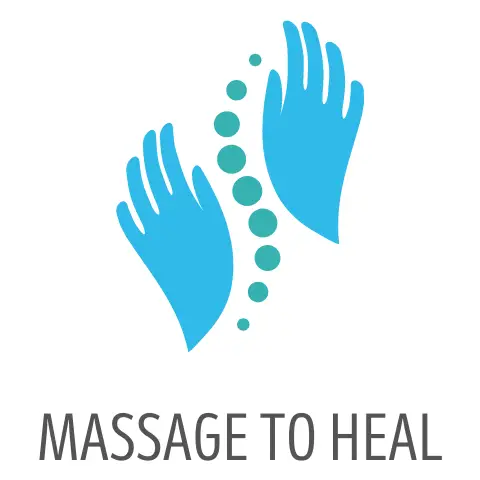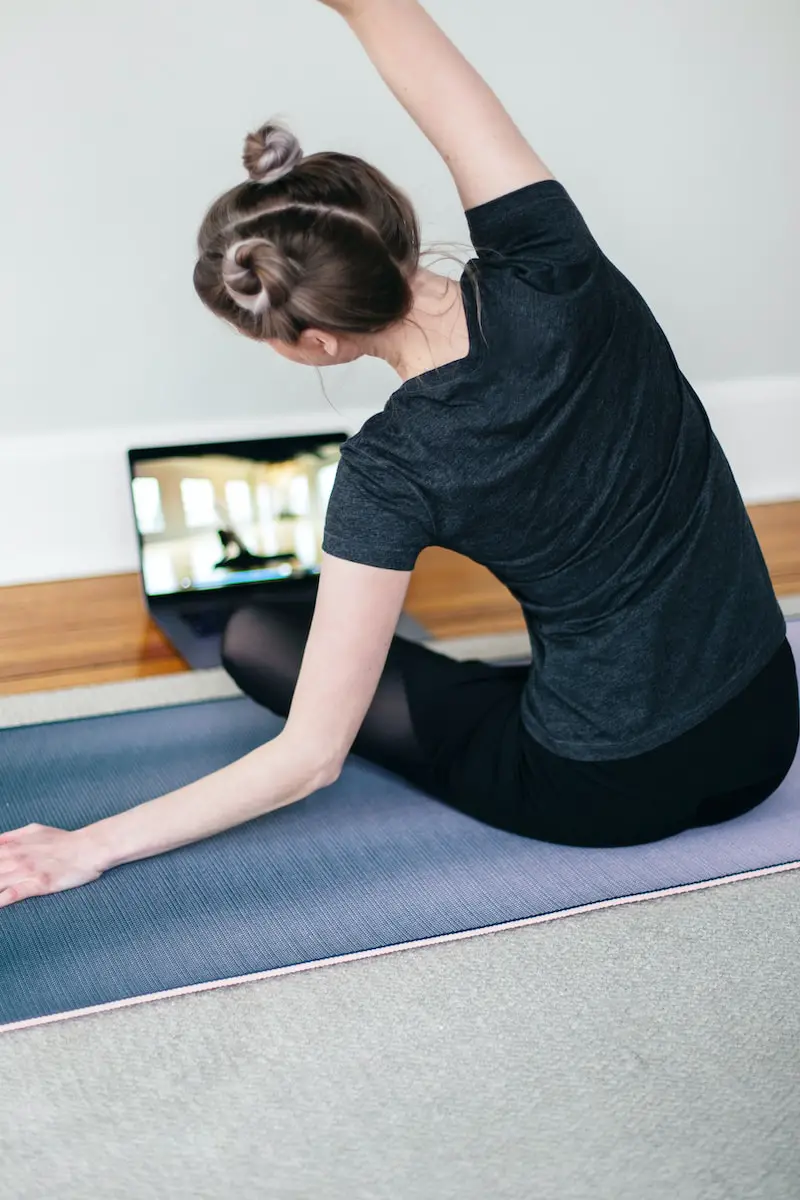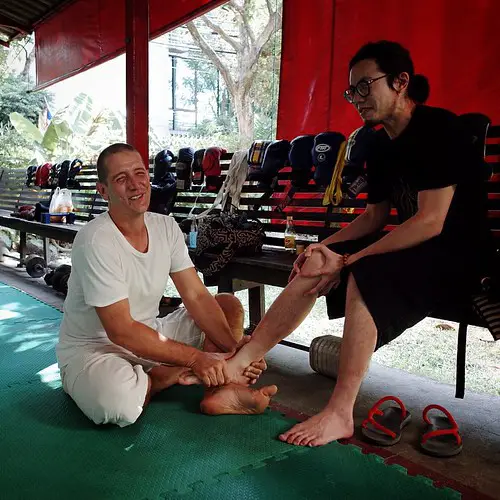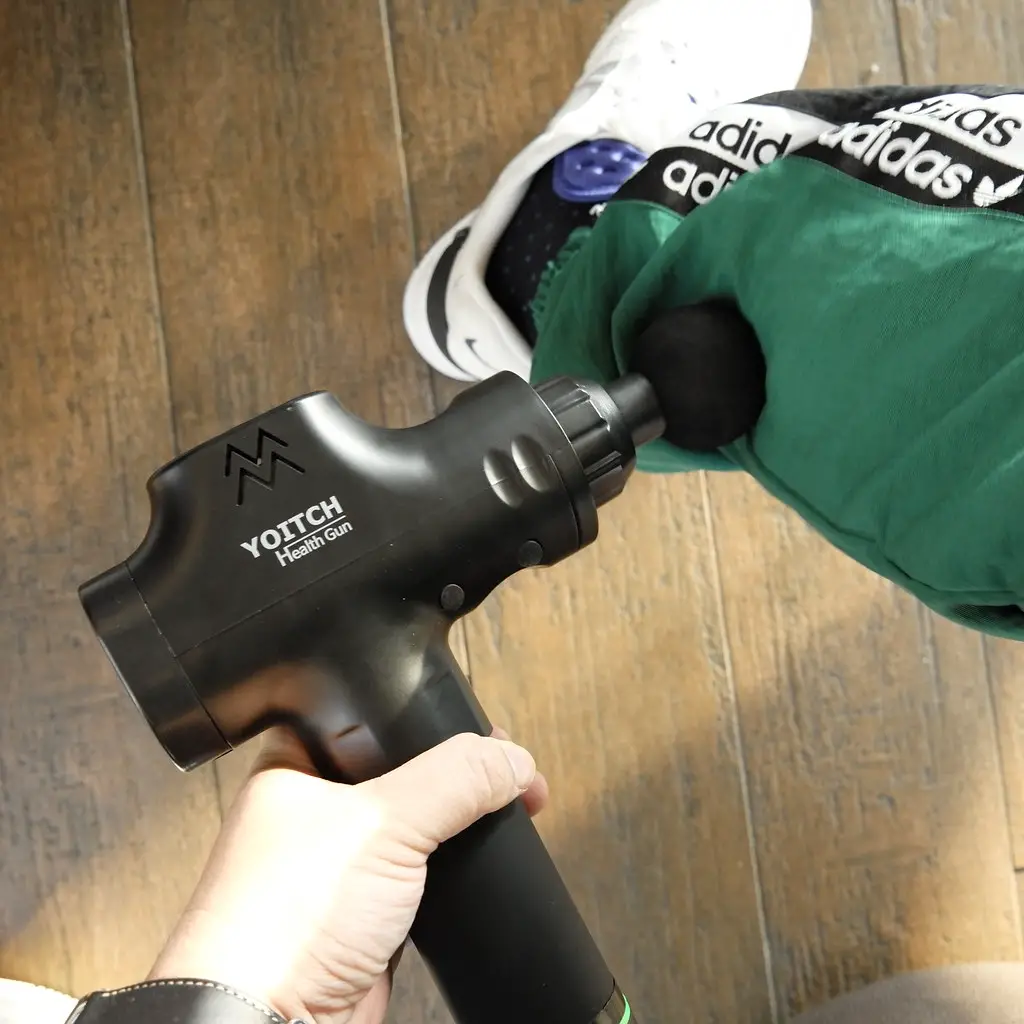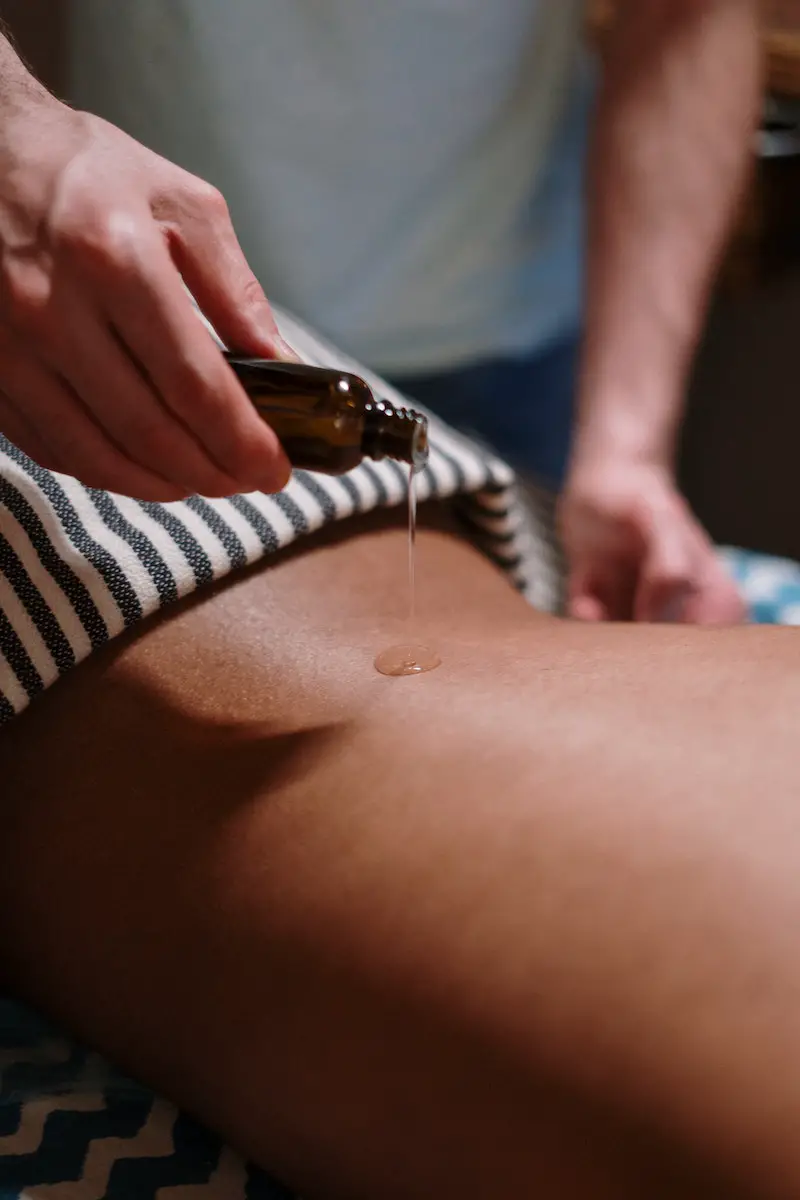Living with arthritis can be a real challenge, as it often causes pain and discomfort in various joints throughout the body. You may have tried multiple treatments to alleviate arthritis pain, but one method that might pique your interest is massage therapy. The question is, does massage help arthritis?
Massage therapy has been found to provide relief for various symptoms associated with arthritis, including pain reduction and increased range of motion. Research suggests that aromatherapy massage and reflexology can effectively reduce pain and fatigue in patients with rheumatoid arthritis. Additionally, moderate pressure massage therapy has shown to benefit those suffering from neck arthritis and rheumatoid arthritis in upper limbs.
As you explore massage therapy as a potential treatment for your arthritis, make sure to consult with your healthcare professional before integrating it into your routine. They will guide you through choosing the most suitable massage techniques and help you optimize the benefits of this complementary approach.
Table of Contents
- Understanding Arthritis and Massage
- Massage Techniques for Arthritis Relief
- Benefits of Massage for Arthritis Sufferers
- Self-Massage Techniques and Precautions
- Choosing the Right Massage Therapist
- Additional Treatment Options and Lifestyle Recommendations
- Frequently Asked Questions
Understanding Arthritis and Massage
When dealing with arthritis, it’s essential to understand the types of arthritis and how massage therapy can help alleviate pain and improve your quality of life.
Arthritis Types: Osteoarthritis and Rheumatoid Arthritis
Arthritis is a common condition that affects the joints, causing pain, inflammation, and stiffness. There are two main types of arthritis that you should be aware of:
- Osteoarthritis: This is the most common form of arthritis, affecting millions of people worldwide. Osteoarthritis occurs when the protective cartilage at the ends of your bones wears down, causing pain and discomfort. It generally affects weight-bearing joints such as the hips, knees, and spine, but can also impact your hands and feet.
- Rheumatoid Arthritis: Rheumatoid arthritis is an autoimmune disease that causes the immune system to attack the lining of your joints, resulting in pain, inflammation, and sometimes joint deformity. This type of arthritis usually affects smaller joints like those in your hands, wrists, and feet.
Both osteoarthritis and rheumatoid arthritis can significantly impact your daily life and limit your mobility.
Defining Massage Therapy
Massage therapy involves the manipulation of soft tissues, such as muscles, tendons, and ligaments, to promote relaxation, reduce pain, and improve overall wellness. There are various massage techniques, including Swedish, deep-tissue, and trigger-point therapy, which can target different areas and provide specific benefits.
For those with arthritis, massage therapy can offer several potential benefits:
- Pain relief: Massage can help alleviate pain in the joints and surrounding muscles by improving circulation, reducing inflammation, and promoting relaxation.
- Increased mobility: By relaxing tight muscles and improving joint flexibility, massage therapy can enhance range of motion and make daily tasks easier to perform.
- Improved sleep: The soothing effects of massage can help improve your sleep quality, which is often disrupted by arthritis pain and discomfort.
Remember that the benefits of massage therapy may vary depending on the type of arthritis you have, the severity of your condition, and your unique needs. It’s essential to consult with a healthcare professional and registered massage therapist to tailor treatment plans to suit your specific requirements.
Massage Techniques for Arthritis Relief
Swedish Massage
Swedish massage is a gentle technique that involves long, flowing strokes to help relax your muscles and improve blood circulation. This type of massage can be especially beneficial for individuals with arthritis, as it can help reduce pain and increase a sense of well-being. While receiving a Swedish massage, you may experience reduced stiffness and improved flexibility in your joints.
Deep Tissue Massage
Deep tissue massage focuses on relieving tension in your muscles and fascia by applying firm pressure and slow, deliberate strokes. This technique is particularly useful for those suffering from arthritis in the neck, shoulders, and upper limbs, as it has been shown to reduce pain and improve range of motion. Communicate with your massage therapist to ensure a comfortable level of pressure is maintained throughout the session.
Hot Stone Massage
In hot stone massage, heated stones are placed on key points of your body to help relax your muscles and improve blood flow. The warmth from the stones can help alleviate joint pain in individuals with arthritis, particularly when combined with gentle massage techniques. Remember to inform your therapist if the stones become too hot or uncomfortable during the session.
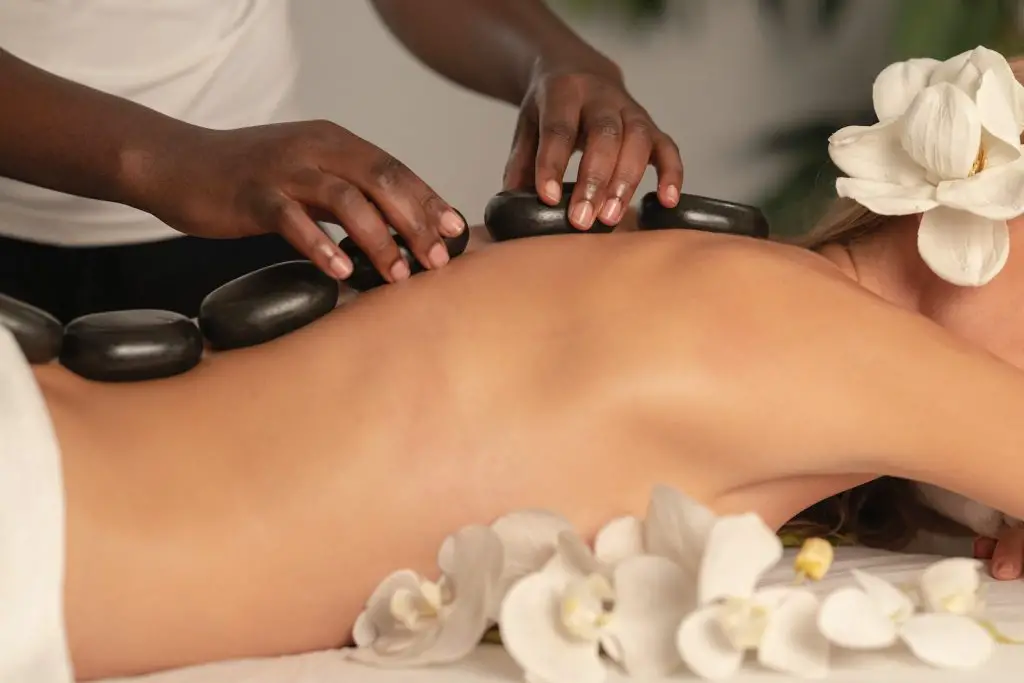
Myofascial Release
Myofascial release is a technique that targets your fascia, the connective tissue surrounding your muscles, bones, and organs. This method involves applying gentle, sustained pressure to release tightness and stiffness in the fascia. Myofascial release can be especially beneficial for individuals suffering from arthritis, as it can contribute to reducing pain and improving overall mobility.
Craniosacral Therapy
Craniosacral therapy is a gentle technique that focuses on the flow of cerebrospinal fluid and the movement of the bones in your skull, spine, and pelvis. By applying light touch to these areas, a craniosacral therapist can help release restrictions and improve the overall functioning of your nervous system. While craniosacral therapy may not directly target your arthritic joints, it can promote relaxation and a sense of balance that may positively affect your overall pain levels and mobility.
Benefits of Massage for Arthritis Sufferers
Pain Relief and Inflammation Reduction
Massage therapy can help alleviate joint pain and reduce inflammation by increasing blood circulation and promoting relaxation. Massage works by stimulating your body’s natural pain-relieving chemicals, known as endorphins. Regular massages can help manage arthritis-related pain and inflammation, making it easier for you to go about your daily activities.
Improvement in Range of Motion and Flexibility
Arthritis can lead to stiffness and limited range of motion, which can affect your ability to move freely. Massage can help improve flexibility and range of motion in your joints by gently stretching and mobilizing the soft tissues. This can result in a better quality of life, enabling you to perform daily tasks with greater ease.
Relaxation and Stress Management
Receiving a massage not only helps with physical pain relief but also has psychological benefits. Massage therapy can promote relaxation by stimulating the release of serotonin, a feel-good chemical in your brain. By reducing stress and promoting relaxation, massage can help you better manage the mental and emotional challenges associated with living with arthritis.
Sleep Quality Enhancement
Many people with arthritis experience sleep disturbances as a result of pain and discomfort. Massage can improve your sleep quality by reducing muscle tension and promoting relaxation, making it easier for you to fall asleep and stay asleep throughout the night.
Mental Health and Mood Enhancement
Living with arthritis can take a toll on your mental health, causing feelings of depression and anxiety. Regular massage therapy can help improve your mood by releasing endorphins, serotonin, and other feel-good chemicals in your brain. This can contribute to overall mental well-being and make it easier for you to cope with the emotional aspects of arthritis.
By incorporating massage therapy into your arthritis management plan, you can experience significant improvements in pain relief, range of motion, relaxation, sleep quality, and mental health. Give it a try and experience the benefits for yourself.
Self-Massage Techniques and Precautions
Effective Self-Massage Approaches
When dealing with arthritis, self-massage can be an effective way to reduce stiffness, improve muscle function, and alleviate pain. Begin by identifying the affected joints and muscles. Apply gentle pressure using the pads of your fingers or a foam roller, particularly on the areas that feel tight or sore. Remember to massage slowly and maintain a rhythmic pace.
As you warm up the muscles, gradually increase the pressure. Use different massage techniques like kneading, friction, and percussion. Integrating self-massage with exercises and stretches can further help improve joint mobility and posture. According to the Touch Research Institute, self-massage with ginger oil showed positive effects on osteoarthritis patients.

Precautionary Measures and Contraindications
Before practicing self-massage for arthritis, it’s essential to be aware of some precautions:
- Skin Health: Ensure your skin is clean and free from open wounds or rashes to prevent infection and irritation.
- Pressure Application: Avoid applying too much pressure on the joints or bony areas, as this can cause pain or even harm the joint.
- Medications: Be mindful of your current medications and consult your doctor if any topical applications, like essential oils, might have adverse interactions.
- Technique: Always use proper self-massage techniques and avoid overstretching or straining your muscles.
Some contraindications to self-massage include severe inflammation, uncontrolled high blood pressure, recent injury or surgery, and infections. If any of these apply to your situation, it’s best to consult with a healthcare professional before attempting self-massage.
Combining Self-Massage with Professional Sessions
Incorporating self-massage into your regular routine can produce significant benefits when combined with professional massage therapy. According to a systematic review, massage therapy has shown to reduce pain and improve function in patients with arthritis.
While self-massage can help with daily maintenance, professional massages provide more in-depth treatment, addressing specific issues and providing tailored techniques. Additionally, a trained massage therapist can guide and advise on proper self-massage techniques, ensuring you yield maximum benefits from your self-care regimen.
In conclusion, self-massage can be a helpful tool to alleviate arthritis symptoms. Make sure to follow the proper techniques and precautions, stay mindful of any contraindications, and consider supplementing self-massage with professional sessions to achieve the best results.
Choosing the Right Massage Therapist
Finding a Qualified Massage Therapist
When seeking a massage therapist to alleviate arthritis symptoms, it’s essential that you find a professional who has experience and training in this particular area. Look for a therapist who either specializes or has undergone ample training in dealing with arthritis. Renowned researcher Tiffany Field has conducted substantial research in massage therapy, specifically for pain management, so be sure to inquire about their familiarity with her findings.
Communication and Establishing Trust
It’s important for you to communicate openly with your massage therapist, as they’ll need to understand your arthritis condition and any specific concerns. The therapist should listen to your needs and preferences regarding pressure, technique, and areas in need of attention. Open communication also entails discussing any alternative treatment methods, such as addressing connective tissue or focusing on pain management, which could help improve overall results.
Scheduling and Session Frequency
You should confer with your therapist about an appropriate schedule and session frequency that works best for your needs and lifestyle. Researchers have found benefits from regular 8-week courses of massage therapy for osteoarthritis of the knee, emphasizing frequency and adherence to a treatment regimen. Ensuring a flexible yet consistent schedule can help optimize the benefits massage therapy has for arthritis sufferers.
Additional Treatment Options and Lifestyle Recommendations
In addition to massage therapy for arthritis, there are other approaches and lifestyle changes that may improve your condition and overall well-being.
Physical Activity and Exercise
Regular physical activity and exercise can be beneficial in managing arthritis, particularly for those with osteoarthritis or fibromyalgia. Engaging in low-impact activities, such as swimming or walking, can help maintain and improve joint flexibility, reduce inflammation, and strengthen the muscles around your joints. Aim for at least 30 minutes of moderate exercise most days of the week, and remember to listen to your body and modify exercises as needed to avoid overexertion or injury.
Optimal Sleep Habits
Prioritizing sleep is essential for overall health and can be particularly important when managing arthritis. Adequate rest can help reduce pain, inflammation, and stress levels. Aim for 7-9 hours of sleep per night, and establish a consistent sleep schedule by going to bed and waking up at the same time each day. Create a relaxing bedtime routine, and ensure your sleep environment is comfortable, dark, and free of noise or distractions.
Dietary and Nutritional Considerations
A well-balanced diet can support joint health and contribute to weight management, which can help alleviate pressure on joints affected by arthritis. Incorporate anti-inflammatory foods such as omega-3 rich fish, whole grains, fruits, and vegetables into your diet. Limit your intake of processed foods and added sugars, as these can contribute to inflammation. Some individuals may find relief in supplementing their diet with specific nutrients like glucosamine, chondroitin, or antioxidants; however, it’s essential to consult with your healthcare provider before beginning any new dietary supplements.
When considering massage techniques for arthritis, two options that may be beneficial are effleurage and moderate-pressure massage. Effleurage, a light and soothing form of massage, employs long, gliding strokes that can help stimulate circulation and warm your tendons and muscles. Moderate-pressure massage, which involves firmer pressure and deeper strokes, is often more effective at reducing pain and improving joint function in arthritis sufferers than light pressure massage.
While massage can be beneficial in managing symptoms of arthritis, it’s important to be aware of certain situations in which massage may not be appropriate. For example, massage is generally not recommended for those with active cancer, as there is a risk of spreading cancer cells through the lymphatic system. Please consult with your healthcare provider before beginning any new treatment or therapy to ensure it is safe and appropriate for your specific situation.
Frequently Asked Questions
Can massage worsen arthritis?
In general, massage can help relieve pain and stiffness in your joints. However, it’s important to work with a trained therapist who understands your specific arthritis condition. If you experience increased pain or discomfort during a massage, communicate with your therapist to adjust the pressure or technique.
Do massages reduce inflammation?
Yes, massages can help reduce inflammation. Studies have shown that massage therapy can improve circulation, reduce muscle tension, and stimulate the release of endorphins, which act as natural pain relievers. These effects can help to reduce inflammation in your joints and promote healing.
Is deep tissue massage safe for arthritis?
Deep tissue massage may not be suitable for everyone with arthritis. If you have severely inflamed joints or a recent injury, deep tissue massage could potentially worsen your condition. It’s essential to consult with your healthcare provider and a massage therapist who has experience working with arthritis patients before trying deep tissue massage. They will help you determine the right treatment plan for your specific needs.
Which type of massage is best for arthritis?
There isn’t a one-size-fits-all answer to this question, as the best type of massage for your arthritis will depend on your individual needs and preferences. Some people with arthritis may find relief from a gentle Swedish massage, while others might benefit from a more targeted neuromuscular or myofascial release therapy. Your massage therapist can recommend an approach that will best support your overall treatment plan and goals.
Can self-massage alleviate arthritis?
Self-massage can be a useful way to manage your arthritis symptoms at home. Techniques such as kneading, stroking, and applying gentle pressure to the affected areas can help relieve pain and stiffness. However, you should also seek professional guidance from a massage therapist or physiotherapist to ensure that you’re using the right techniques and not causing further harm. Remember, self-massage is just one part of your comprehensive arthritis treatment plan.
Is massage effective for rheumatoid arthritis?
Massage therapy can be helpful in managing symptoms of rheumatoid arthritis (RA), such as pain and stiffness. A study found that children with juvenile rheumatoid arthritis who received massages had reduced pain and anxiety levels. However, massage should be used alongside other treatments such as medication and physical therapy, under the supervision of your healthcare provider. Always consult your doctor before starting any new therapy for your RA, including massage.
